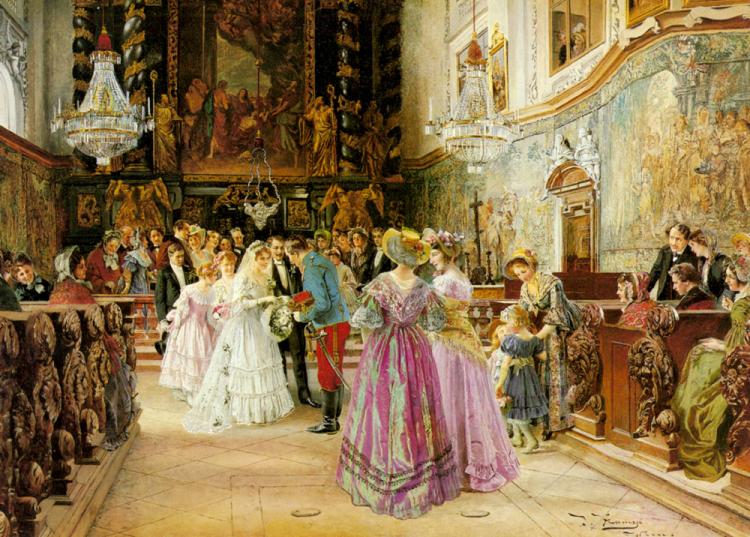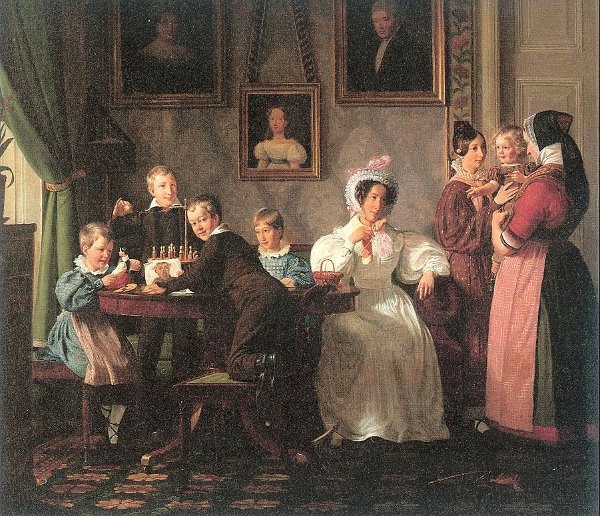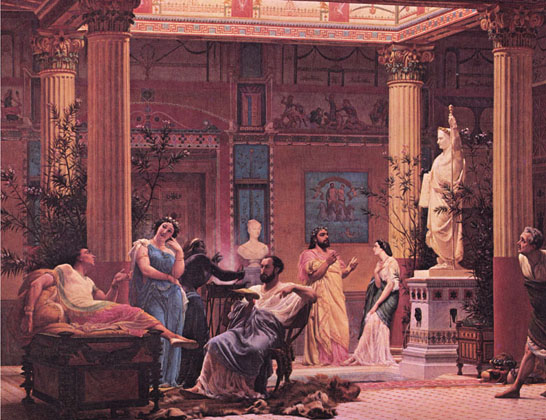
Painting by Johann Hamza
Marriage is the common state of man. Therefore, it is as a member of his family that a man joins the great fabric of families that make up the social body of a country.
The social body is also formed of other intermediate groups such as guilds, universities, and local governments. An individual’s admission into one of these groups is also a means of integration into the social body.

Painted by Wilhelm Marstrand
When we consider the State’s origin, we see that, in one way or another, it arose from entities whose “raw material” was the family. The family had given rise to large family blocs that the Greeks termed génos and the Romans gens. The gens, in turn, formed larger blocs still of a familial nature, but whose genealogical correlations tended to be diluted and lost in the night of time. These were the phratries of the Greeks and the curiae of the Romans. “The association,” explains Fustel de Coulanges, “naturally continued to grow larger in the same manner. Many curiae or phratries grouped together and formed a tribe.”(1) Later, the ensemble of tribes formed the city, or better, the civitas; and with it the State.(2)
(1) Numa Denis Fustel de Coulanges, La Cité Antique (Paris: Hachette, n.d.), bk. 3, p. 135.
(2) On this theme, see the texts of Fustel de Coulanges, Frantz Funck-Brentano, and Msgr. Henri Delassus in Nobility and Analogous Traditional Elites, Documents VII, VIII, and IX, respectively.









